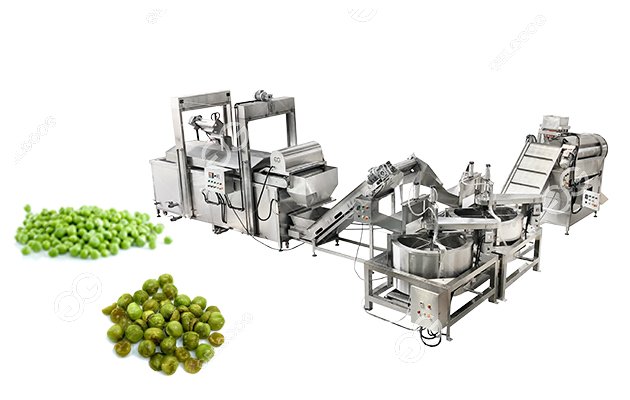How to Fry Pea?- Automatic Frying Machine
In the food industry, particularly in the realm of snack production, efficiency, consistency, and quality are paramount. When it comes to how to fry peas, employing automatic frying machines has become a game-changer. These machines not only bolster production capacity but also uphold the uniformity of the finished product, ensuring customer satisfaction. In this guide, we delve into the how to fry peas in a factory.
Understanding automatic frying machines
Automatic frying machines are sophisticated pieces of equipment designed to streamline the frying process. They are equipped with advanced technology that regulates temperature, frying time, and oil usage, thereby optimizing efficiency and product quality. These machines come in various sizes and configurations, catering to the specific needs of different production scales.

Preparing peas for frying
Before the frying process begins, it's crucial to prepare the peas adequately. This involves cleaning, sorting, and possibly blanching them to ensure uniform frying. Additionally, any excess moisture must be removed to prevent oil splattering and achieve crispiness during frying.
Setting up the automatic frying machine
Temperature control: Adjust the frying temperature according to the requirements of the pea product. Different pea varieties may require varying temperatures for optimal frying.
Oil management: Ensure the automatic frying machine is filled with the appropriate cooking oil and that the oil level is maintained within the specified range. Some machines come with oil filtration systems to prolong oil lifespan and maintain frying quality.
Conveyor speed: Set the conveyor speed to regulate the flow of peas through the frying chamber. This helps maintain consistency and prevents overcrowding, which can lead to uneven frying.
Frying process
Once the automatic frying machine is set up, the process can begin:
Loading: Peas are loaded onto the conveyor belt, either manually or through an automated feeding system, ensuring an even distribution across the belt.
Frying: As the peas move through the frying chamber, they are submerged in hot oil, where they undergo the frying process. The precise frying time is predetermined based on factors such as pea size, moisture content, and desired crispiness.
Monitoring: While the automatic frying machine regulates most parameters, periodic monitoring is essential to ensure everything runs smoothly. This includes checking oil temperature, conveyor speed, and product quality.
Post-frying procedures
After frying, the peas undergo further processing steps, such as seasoning, cooling, and packaging. Seasoning can be done immediately after frying to ensure optimal flavor absorption, while cooling helps prevent condensation and maintains product crispiness. Finally, the peas are packaged using automated packaging systems, ready for distribution.
Benefits of automatic frying machines for pea production
Increased efficiency: Automatic frying machines significantly enhance production capacity, allowing for higher throughput with minimal manual intervention.
Consistency: By precisely controlling parameters such as temperature and frying time, automatic frying machines ensure uniformity in the finished product, eliminating variations commonly associated with manual frying.
Quality assurance: With consistent frying conditions, the quality of the fried peas remains high, meeting the standards expected by consumers.
Cost savings: Despite the initial investment, automatic frying machines can lead to long-term cost savings through reduced labor costs, lower oil consumption, and decreased product wastage.
In the competitive landscape of snack production, the utilization of automatic frying machines has revolutionized the way peas are fried in factories. By optimizing efficiency, ensuring consistency, and upholding quality standards, these machines have become indispensable assets to manufacturers.
